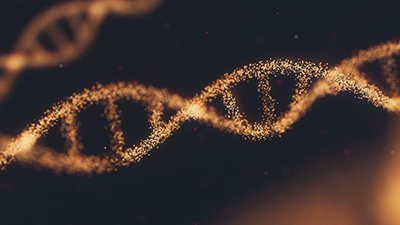
How Should Christians View Biological Classification?
While God built certain classifications into the creation, man has named animals since the Garden of Eden. One of Adam’s first jobs was to classify the animals. “Now out of the ground the Lord God had formed every beast of the field and every bird of the heavens and brought them to the man to see what he would call them. And whatever the man called every living creature, that was its name. The man gave names to all livestock and to the birds of the heavens and to every beast of the field. But for Adam there was not found a helper fit for him.”1 Adam was the world’s first taxonomist. He spent part of the sixth day naming the birds and the beasts. While this was a much easier job then than it would be today since no variation had occurred yet, it still would have taken him perhaps a few hours to name the kinds.
Throughout history, man has followed Adam’s example and attempted to classify the world around him into groups. One of the first recorded to do so was the Greek philosopher and naturalist Aristotle. Aristotle grouped living things into plants and animals, with several subgroupings. He wrote several works on animals that included a discussion of their history2. Aristotle’s classification system, as rough as it was, like many of his other ideas, persisted well into the next millennium.
The modern classification system used in science today is based strongly on the work of Swedish botanist Carl Linnaeus who built on John Ray’s work. Linnaeus was a Christian who was passionate about science, even as a child.3 The Linnaean classification system was brilliantly simple. Linnaeus postulated, for example, that plants could be grouped by their reproductive organs. He called these groupings classes. A few steps below the classes, Linnaeus built a group called genus. Multiple genera could be placed in a class. Below the genus, Linnaeus created a group he called species. As even some evolutionists acknowledge, species is the Latin word for kind.4
In naming species, Linnaeus solved a significant problem in biology. Previously, living things had been given Latin names that were very descriptive but were too long for common use. Linnaeus kept the names in Latin, the language of science at the time, but cut the names down to two words; the genus and species. This is referred to today as binomial nomenclature. Every creature on earth is named using this system. For example, lion in the Linnaean system is called Panthera leo.
The Modern Classification System
When Darwin came along, the classification system Linnaeus envisioned was hijacked to imply that the structure inferred from the taxonomic system actually existed in nature and was used to allege a continuous relationship into the past. “[T]he theory of evolution states that the apparent relationships of organisms in a systematic classification are real relationships, because “relationship” in such classification is not a metaphor but is actually to be ascribed to community of descent.”5 In other words, the structure of the classification system is actually the structure of a giant, universal family tree of all life. While this was not the Linnaean intent, it is what classification has come to in the modern world.
As a result, modern classification is now changing into a largely dependent technique known as cladistics. Because of a pervasive evolutionary mindset, a new dogma has emerged. It is a concept summed up as “common design equals common ancestry.” In other words, if creatures share similarities, then it is presumed that they have a common ancestor in the past.
It is a concept summed up as “common design equals common ancestry.”
Within a created kind—where the animals indeed are related—this method can be advantageous. When creatures are not related and share design features, problems are introduced. So the universal belief that common design equates with common ancestry isn’t always the best. Hence, many creationists often appeal to the more logical mantra of “common design is a result of a common designer.”
Cladistics examines arbitrarily selected character traits, arbitrarily assigns values to them, and attempts to build a family tree for a given set of organisms based on statistical similarity. It separates these organisms into groups called clades forming what is called a nested hierarchy. Nested hierarchy in particular is frequently cited as evidence for evolution (yet it is built on arbitrary assumptions).
This is because organisms presumably naturally fit into one another like Russian nesting dolls, each one fitting into a larger nested hierarchy. This is something evolutionists assume should not be the case if animals were created. The nested hierarchies are arranged into something called a cladogram, or phylogenetic tree.
Generally speaking, scientists consider shorter phylogenetic trees to be more accurate than longer ones, though this is changing as more reliance is placed on computer modeling in an effort to eliminate potential human error in calculations.6 The specific goal of cladistics is reconstructing an evolutionary tree of life for a given group of organisms. Some books go so far as to try to build a tree of life for all life, connecting microbes to man.
Cladists operate using various arbitrarily-selected sets of data. Originally, the datasets were morphological in nature, relying heavily on the appearance and traits of the organisms in question. These datasets are, in general, a question of presence or absence of the traits. The datasets are selected by the authors of a given study and are not holistic, often encompassing only certain traits or certain regions of DNA.7
However, the advent of genetics and genetic sequencing introduced a conflict into the cladistic realm. Genetic and morphological data are rarely used together in the same cladistics study. With the advent of genetics, many cladists have begun using genetic data either exclusively or extensively for their cladograms. This has prompted a conflict between those who prefer a morphological approach to taxonomy, and those solely interested in genetic data.8 Despite the disagreement over type of dataset used, cladistics uses the same methods, no matter what dataset is used. However, this debate obscures the real issues in play.
The cladistics technique is based on the belief that speciation is the mechanism of evolution.
The cladistics technique is based on the belief that speciation is the mechanism of evolution. Limitless genetic variation is assumed in this system. The process is heavily dependent on the assumption of Darwinian evolution. Even evolutionists freely admit, “Cladistics involves few assumptions, and its scientific character is due in no small part to its reliance on but a single auxiliary premise (background knowledge) having to do with process, namely descent with modification.”9 However, that one assumption is enough to destroy cladistics. Evolution is assumed for cladistics and if cladistics are then used to prove evolution, it is the fallacy of begging the question (using itself to prove itself). Obviously, evolution is woven into the fabric of cladistics, and, therefore indirectly, modern cladistical taxonomy.
Quite a few evolutionists want to somehow separate cladistics from evolution. They recognize that, if evolution is assumed as a basis for cladistics, then cladistics cannot provide evidence for evolution. That would be logically circular, and, more importantly, foolish. This lengthy quote illustrates their line of thought quite well:
The process of phylogeny that explains the hierarchical patterns discovered by systematics is one of the most profound empirical theories of modern science. I have not claimed that macroevolution is poorly corroborated and therefore not intersubjectively plausible (macroevolution is one of my personal favorite theories, and I teach my undergraduate students that it is “true”). Instead, my argument is that the theory of macroevolution is corroborated by evidence from systematics (i.e., comparative anatomy, paleontology, biogeography, and more, recently, comparative biochemistry). Therefore, the a priori assumption of descent with modification fails to provide independent ontological support for systematics. If “the background knowledge the bearing of descent with modification” underlying cladistics is not testable by independent means, it would seem to more a metaphysical First Principle like vitalism or orthogenesis than a component of a Popperian hypo-thetico-deductive approach.10
There is a lot in that quote to unpack, but the idea behind it is that if cladistics is not independent of evolution, then it cannot provide evidence for evolution. The author goes so far as to admit that if macroevolution cannot be confirmed independently, it isn’t part of science but is instead “metaphysical.”
Notice also that the author goes out of his way to ensure that his fellow evolutionists do not blackball him for heresy by professing that macroevolution is one of his favorite “theories” and he teaches his students that it is true. It is likely that this author is aware what happens to those who even question Darwinian dogma.11
In an attempt to provide evidence for his view, this author has actually illustrated how deeply tied to evolution cladistics is. Cladistics is commonly cited as evidence for evolutionary common ancestry. It has no practical application. Almost every paper discussing phylogeny is attempting to infer descent with modification. Thus, it’s primary use is for proving evolution. Yet, as noted above by a different author, descent with modification is assumed before any work is done. Cladistics is actually an example of the circular reasoning fallacy (i.e., affirming the consequent or begging the question).
As part of the squabbling over cladistic methodology, there are frequent papers responding to other authors arguing over either trivialities or methodology. In one such paper, a revealing statement was made in the conclusion: “It is precisely this connection to the principle of common descent that insures phylogenetic systematics a central role in systematic and evolutionary biology and accounts for its ever-increasing success.”12 Cladistics is clearly centrally tied to the evolutionary account. The two cannot be separated.
In fact, cladistics assumes evolutionary ancestry by default. It must, in order to work. The whole point of cladistics is to determine relationships between organisms and groups of organisms over time by building a phylogenetic tree.13 There are whole books written containing attempts to do a cladistic analysis on all life forms. The method is designed to look for common ancestry, and nested hierarchies cannot be produced without this assumption. This can be illustrated by the many cladistics articles in the literature that attempt to determine common ancestry of separate groups.14 15 16
A true family tree can only be assembled one way.
Incredibly, one author arguing for a form of cladistics made a presumably massive Freudian slip. He admitted the evolutionary taxonomy system, regarding species as the unit of evolution, cannot be falsified:17 “The difficulties embodied in that part of evolutionary taxonomy which differs from phylogenetic systematics lead to a general lack of testability of evolutionary classifications.”18 While this author most definitely subscribes to evolution as a whole, in attempting to promote his brand of it, he has undermined the entire theory. If evolutionary taxonomy cannot be falsified, then it is arbitrary. If the taxonomy system is arbitrary, then it cannot be a family tree, because it can be assembled any way a scientist desires and still work. A true family tree can only be assembled one way.
Other evolutionists acknowledge the arbitrariness of the taxonomic system. George Gaylord Simpson, an expert on taxonomy wrote:
“In the larger pattern, however, no taxa (including species) can be strictly nonarbitrary as to exclusion. One must draw a completely arbitrary line, representing a point in time, across some steadily evolving lineage and say,‘Here one taxon ends and another begins.’ In principle that means that an individual animal could belong to one species one instant and to another species the next instant. That is seemingly absurd, but no more so than results of other available criteria for such necessary arbitrary divisions.”19
He is correct that it is absurd, but what he overlooks is that it also destroys evolution by speciation because the species is at the discretion of scientists. If speciation is not the mechanism of evolution, then the house of cards collapses.
Evolutionists could potentially counter the arbitrary nature of the species by appealing to the mechanisms of cladistics as provable, thus explaining the variation in nature. However, even some of their own thinkers recognize this is untenable.
“Probably no phylogenetic cladogram, no matter how it is constructed, can be totally ‘proved’ or ‘falsified.’”20
This is an incredibly honest statement because it essentially admits what creationists have been saying for decades. Evolutionary relationships, which are what cladograms are constructed to find, are unproved and unprovable. Because being falsifiable is a key part of the scientific method, this author has just effectively admitted that cladistics is not science, thereby undermining the entire evolutionary tree of life! Remarkably, other authors also make this statement, seemingly unaware of the implications.21
Beyond the evolutionary ideas tied to cladistics, there are other significant problems with cladistics that are independent of worldview. Cladistics-based classifications work based on selecting a group of traits and looking for similarities. But these traits are at the researcher’s discretion! That makes cladistics arbitrary as well.
Researchers can make a cladistics chart based on any trait they want, and they do, as the squabbles over genetic and morphological phylogenies illustrate.22 Thus, theoretically they could produce a direct evolutionary ancestry between any creature they choose. This is not a valid way to make an argument.
Even if this were not an issue, cladistic mechanisms have no way to deal with a massive, outstanding issue in biology: hybridization, or breeding between species. Some authors have admitted this: “We have as yet no technique for dealing with cases of hybridization.”23 Given that hybridization sometimes produces new species, this is a massive hole in the usefulness of cladistics.24
Keeping Classification?
Since cladistics is the new basis for modern classification and it is completely bound up in evolution, it is reasonable to question whether Christians ought to accept this form of the modern classification system. Some Christians have rejected taxonomy entirely in favor of a purportedly more biblical system. However, this position is functionally untenable.
The Linnaean system was not meant to work under a solely naturalistic interpretation of origins.
The Linnaean system was not meant to work under a solely naturalistic interpretation of origins. Linnaeus was a deeply sincere Christian man. He frequently referred to God in his writings, saying “I admire the wisdom of the Creator, which manifests itself in so many various modes, and demonstrate it to others.”25 Linnaeus’ purpose was simply to provide a grouping for organisms. His intent has been misconstrued and repurposed by the current ruling paradigm to make it fit their worldview. Interestingly, some evolutionists, while recognizing Linnaeus for his efforts, dislike his taxonomy because it runs contrary to Darwinian evolution.26
Having a system of classification, however arbitrary, is better than the abject disorder that would result without it. Removing the Linnaean system would return taxonomy to the veritable “Wild West” that it was before Linnaeus published his work, with names at the discretion of the taxonomist. This is certainly not a desirable outcome, nor could a Biblical replacement be achieved under the current ruling paradigm in the scientific community.
The Linnaean system, with its inherent order, is a great benefit to creation baraminologists as well, as it provides a general framework from which to perform studies.27 By having life pre-catalogued into groups, baraminologists can pick a group and attempt to determine what does not belong in that particular kind.
Linnaeus’ system, due to evolutionary influence, is operating in direct opposition to the Bible, though this was not his intent. Simpson even admits that the entire system has been pushed down in order, i.e., that what was once an order is now a family and so on.28
Sadly, Linnaeus’ intent has been hijacked by evolutionary zealots using arbitrary groups and circular reasoning to provide evidence for their dogma by assuming their dogma to be true. Cladistics provides no evidence for evolution. It simply illustrates the extent that the Darwinian advocates will go to promote their ruling paradigm.
Footnotes
- Genesis 2:19-20.
- Aristotle, The History of Animals, trans. D’Arcy Wentworth Thompson, http://classics.mit.edu/Aristotle/history_anim.html.
- Heinz Goerke, Linnaeus, trans. Denver Lindley, (New York: Charles Scribner Sons, 1973).
- B. N. Singh, “Concepts of Species and Modes of Speciation,” Current Science 103, no. 7 (2012): 784–790, SemanticScholar.org pdf.
- Alec L. Panchen, Classification, Evolution, and the Nature of Biology (New York: Cambridge University Press, 1992).
- Valentin Rineau, Rene Zaragueta I Bagils, and Michel Laurin, “Impact of errors on cladistic inference: simulation-based comparison between parsimony and three-taxom analysis.” Contributions to Zoology 87, no. 1 (2018): 25–40, https://hal.sorbonne-universite.fr/hal-01783500/document.
- Adam M. Laing, Sharon Doyle, Maria Eugenia Leone Gold, Sterling J. Nesbitt, Maureen A. O’Leary, Alan H. Turner, Eric W. Wilber, and Karen E. Poole, “Giant taxon-character matrices: the future of morphological systematics.” Cladistics 34, no. 3 (2018): 333–335, https://onlinelibrary.wiley.com/doi/full/10.1111/cla.12197.
- Kipling W. Will and Daniel Rubinoff, “Myth of the molecule: DNA barcodes for species cannot replace morphology for identification and classification,” Cladistics 20 (2004): 47–55, https://onlinelibrary.wiley.com/doi/full/10.1111/j.1096-0031.2003.00008.x.
- “Arnold G. Kluge, “Total Evidence or Taxonomic Congruence: Cladistics or Consensus Classification,” Cladistics 14 (1998): 151–158, http://www.geocities.ws/cybermorphy/Kluge1998.pdf.
- Andrew V. Z. Brower, “Evolution Is Not a Necessary Assumption of Cladistics,” Cladistics 16 (2000): 143–154, https://onlinelibrary.wiley.com/doi/pdf/10.1111/j.1096-0031.2000.tb00351.x.
- Jerry Bergman, Slaughter of the Dissidents (Southworth; Leafcutter Press, 2008).
- Kevin de Queiroz and Michael J. Donoghue, “Phylogenetics Systematics or Nelson’s Version of Cladistics,” Cladistics 6 (1990): 61-75, https://repository.si.edu/bitstream/handle/10088/4669/VZ_1990adeQ_DonoghueCladistics.pdf.
- Willi Hennig, “Phylogenetic Systematics” in Cladistic Theory and Methodology, ed. Thomas Duncan and Tod F. Stuessy, (New York: Van Nostrand Reinhold Company, 1985).
- Ward. C Wheeler, Michael Whiting, Quentin D. Wheeler, and James M. Carpenter, “The Phylogeny of the Extant Hexapod Orders,” Cladistics 17 (2001): 113–169, https://onlinelibrary.wiley.com/doi/abs/10.1111/j.1096-0031.2001.tb00115.x.
- David J. Garbary, Karen S. Renzaglia, and Jeffrey G. Duckett, “The phylogeny of land plants: a cladistic analysis based on male gametogenesis,” Plant Systematics and Evolution 188 (1993): 237-269, ResearchGate PDF.
- Rolando Gonzalez-Jose, Ignacio Escapa, Walter A. Neves, Ruben Cuneo and Hector M. Pucciarelli, “Cladistic analysis of continuous modularized traits provides phylogenetic signals in Homo evolution,” Nature 453 (2008), PDF.
- Ernst Mayr, Animal Species and Evolution, (Cambridge, MA: The Belknap Press of Harvard University, 1965).
- E.O. Wiley, “Karl R. Popper, Systematics and Classification: A reply to Walter Bock and Other Evolutionary Taxonomists.” in Cladistic Theory and Methodology, ed. Thomas Duncan and Tod F. Stuessy, (New York: Van Nostrand Reinhold Company, 1985).
- George Gaylord Simpson, Principles of Animal Taxonomy (New York: Columbia Univeristy Press, 1961).
- W.H. Wagner Jr., “Origin and Philosophy of the Groundplan-divergence Method of Cladistics” in Cladistic Theory and Methodology, ed. Thomas Duncan and Tod F. Stuessy, (New York: Van Nostrand Reinhold Company, 1985).
- Peter D. Ashlock, “The Uses of Cladistics” in Cladistic Theory and Methodology, ed. Thomas Duncan and Tod F. Stuessy, (New York: Van Nostrand Reinhold Company, 1985).
- Will and Rubinoff, 2004.
- Joseph H. Camin and Robert R. Sokal, “A Method for Deducing Branching Sequences in Phylogeny” in Cladistic Theory and Methodology, ed. Thomas Duncan and Tod F. Stuessy, (New York: Van Nostrand Reinhold Company, 1985).
- James Mallet, “Hybrid Speciation” Nature 446 (2007): 279-283, Hybrid Speciation PDF.
- D. H. Stoever, The Life of Sir Charles Linnaeus, trans. Joseph Trapp, (London: E. Hobson, 1794).
- Simpson, 1961.
- Todd Charles Wood and Paul A. Garner, ed. Issues in Creation Genesis Kinds: Creationism and the Origin of Species, (Eugene, OR: WIPF & Stock, 2009).
- Simpson, 1961.
Recommended Resources

Answers in Genesis is an apologetics ministry, dedicated to helping Christians defend their faith and proclaim the good news of Jesus Christ.
- Customer Service 800.778.3390
- © 2024 Answers in Genesis






